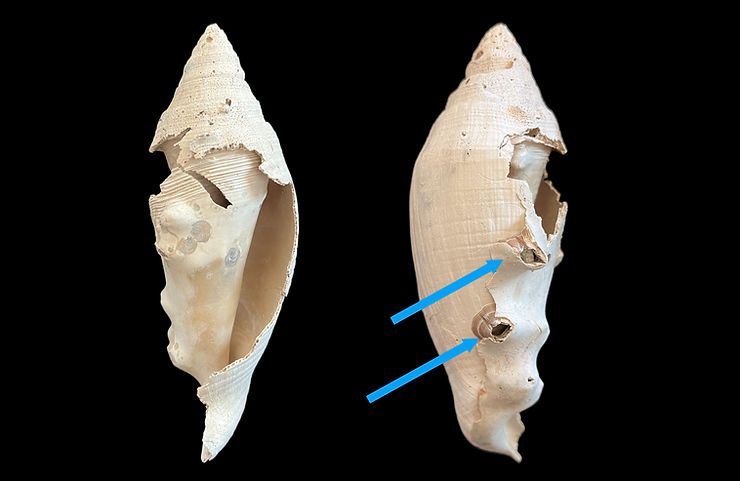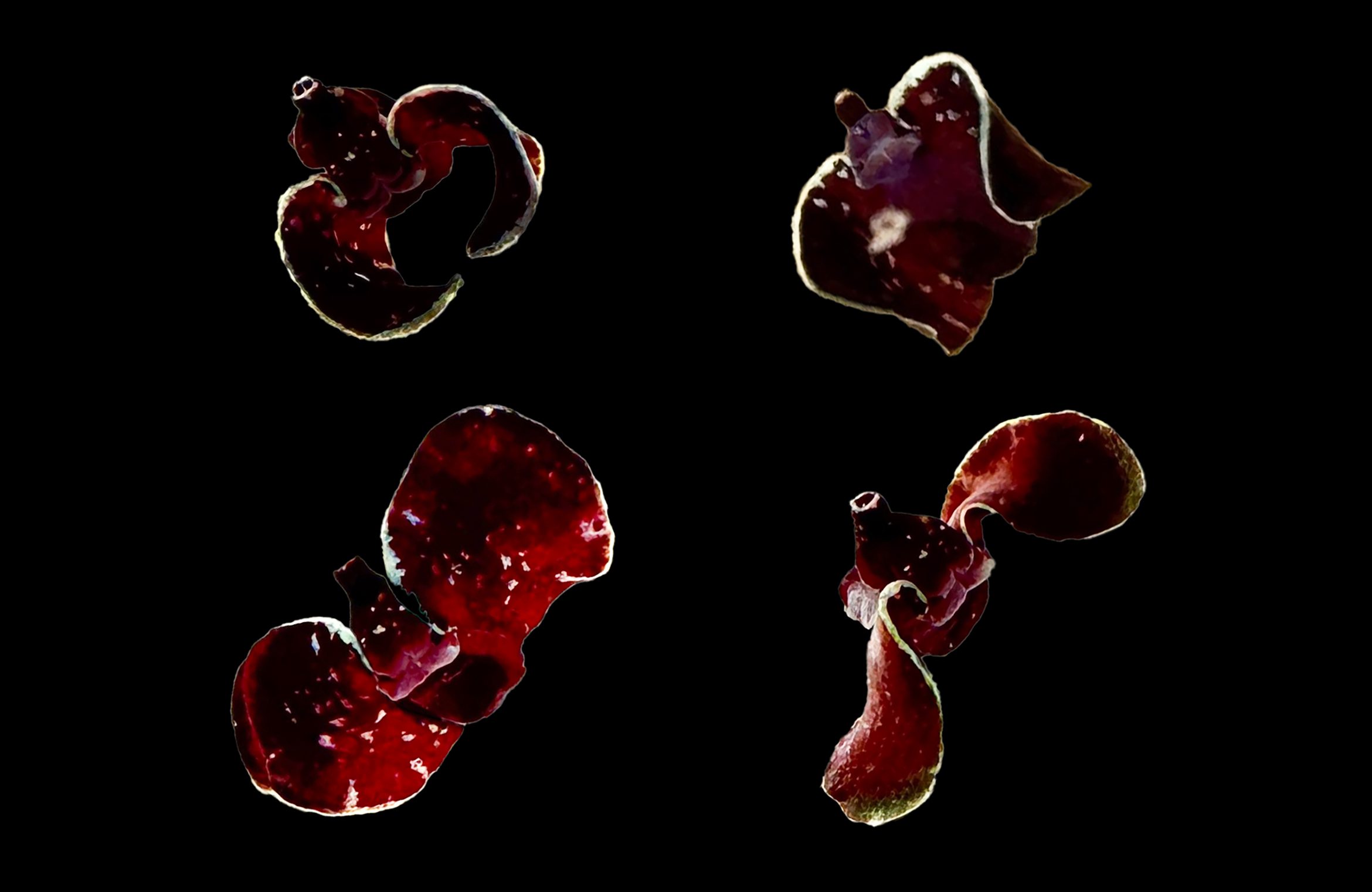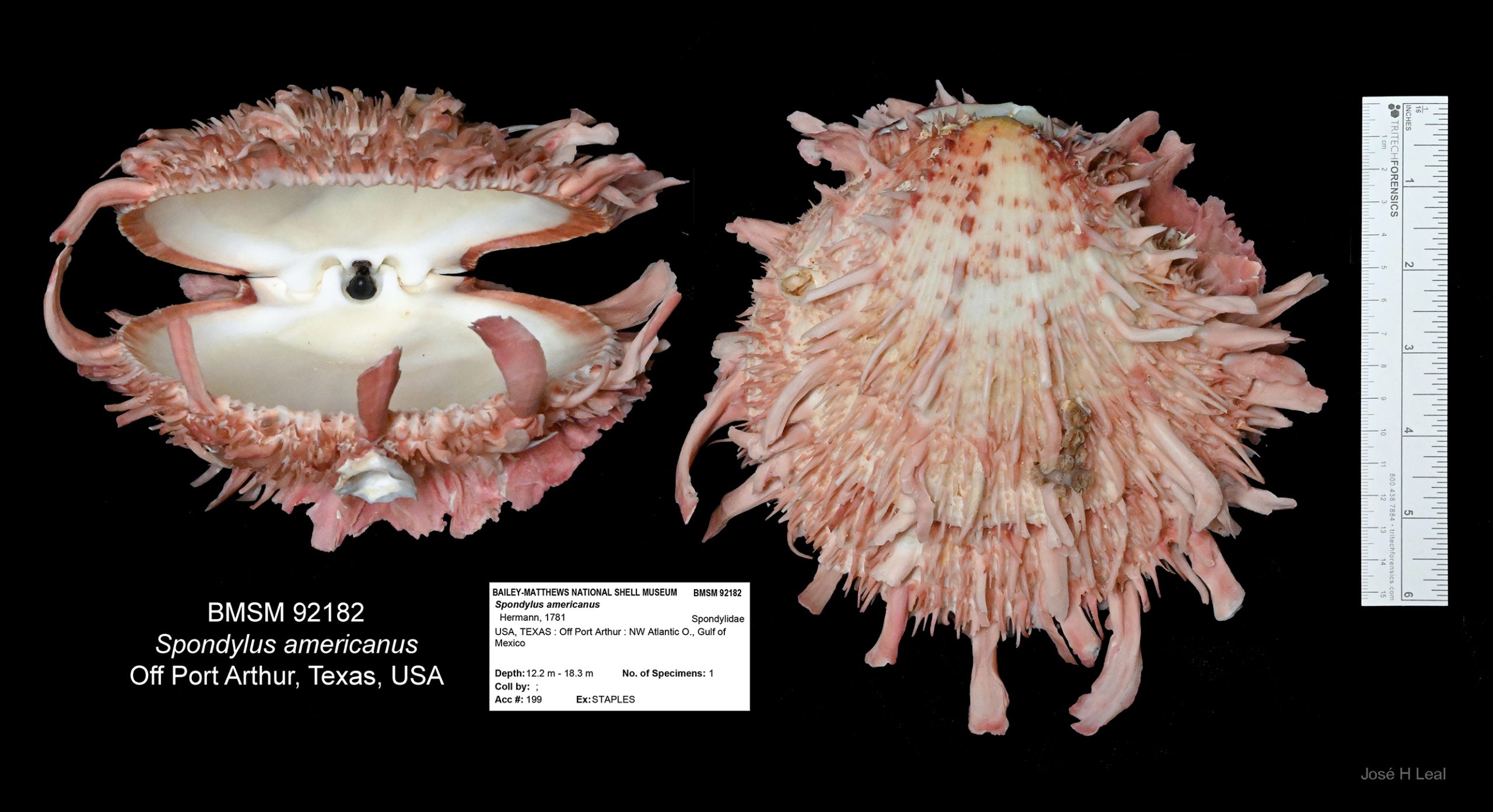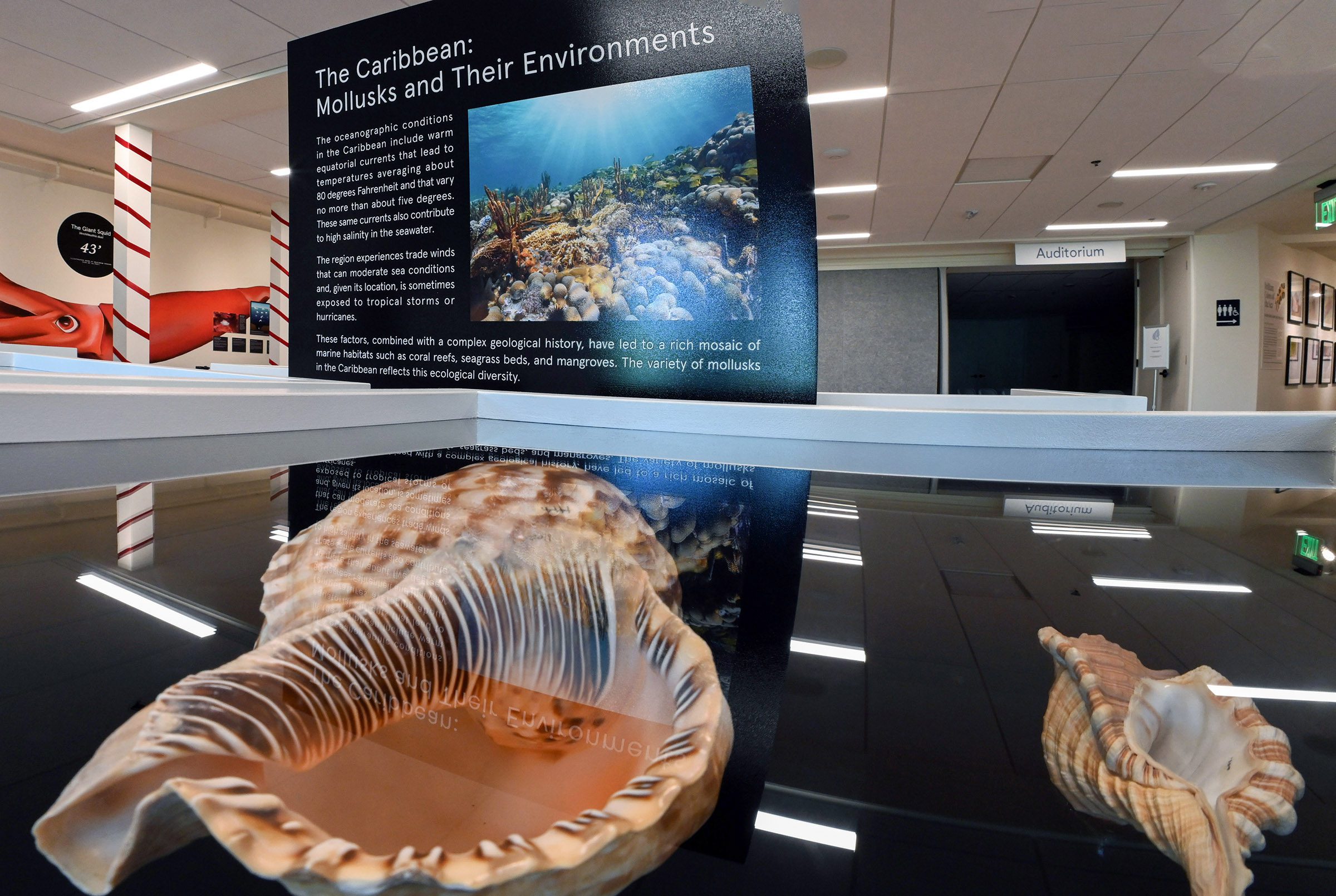During a recent Sanibel Shell Club field trip to a fossil pit in Punta Gorda (Charlotte County, Florida) led by Florida Museum’s own Roger Portell, Sabine Pratsch found this large but damaged Lobatus leidyi shell. Adult shells of this fossil species have a flared outer lip (like a Milk or Queen Conch), but this adult shell apparently had its flared outer lip broken off at some point. But what is really interesting about the shell is that a few barnacles were able to grow onto it (arrows), in the shell area known as the parietal callus. When present, the parietal callus is deposited by the animal as thin layers in the aperture area opposite to the outer lip. The callus is oftentimes glazed—the glazed surface makes it easier for the animal to slide in and out of its shell. In Sabine’s conch, the barnacle larvae had settled onto the parietal callus area, and the animal was able to lay the parietal callus on top of the growing barnacles, without smothering them. This was possible apparently because the barnacles are always moving their plates and appendages back and forth during feeding, preventing newly deposited parietal callus layers to block their openings.
 Lobatus leidyi. Illustration by José H. Leal.
Lobatus leidyi. Illustration by José H. Leal.
#lobatusleidyi #strombidae #charlottecounty #barnacle #parietalcallus


